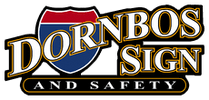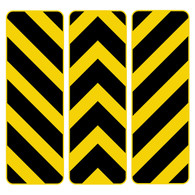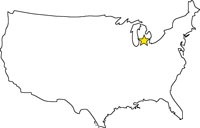The History of Warning Signs and Object Markers
Posted by Kelsey Mansel on 29th Oct 2020
History of the Warning Sign
The Warning Sign system we have today with a complex set of rules and symbols began in 1908 when the automobile association in West London installed warning signs. They were simple in nature and consisted of four symbols including an intersection sign, curve, bump, and railroad crossing. As personal automobiles increased in popularity this eventually led to the development of the road sign system in Europe (similar to our Manual on Uniform Traffic Control Devices (MUTCD) in the United States). While the sign classification system we know today began in the early 1900’s these were not the first recorded warning signs—experts found warning signs carved into stone as early as 1686 in Lisbon indicating messages about horse-drawn vehicles backing up.
Early warning signs were constructed using paint and would sometimes feature colors that were not contrasting enough to ensure visibility during inclement weather conditions. The next step forward in sign manufacturing was embossed signs where the legend (symbol or wording) was raised in order to aid in visibility against the background. At this time embossed signs were non-reflective although modern reflectorized paint offers some reflectivity in embossed signage. The first reflective signage was called button copy and is very rarely seen today with the exception of some Object Markers. Button copy signs featured round reflective buttons (similar to our 3 ¼” Round Reflectors) that were placed within the lettering, symbols, and arrows to provide illumination at night under headlights.
Painted, embossed, and button copy signs eventually led to the development of our modern sign system in which flat aluminum is covered with reflective sheeting. The Warning Sign series features yellow reflective backgrounds with non-reflective black legends. A crucial component of the Warning Sign series is Object Markers—these are a set of signs used to mark obstructions in the road such as guard rails, bridges, underpasses, narrow shoulders, islands, and other road barriers.
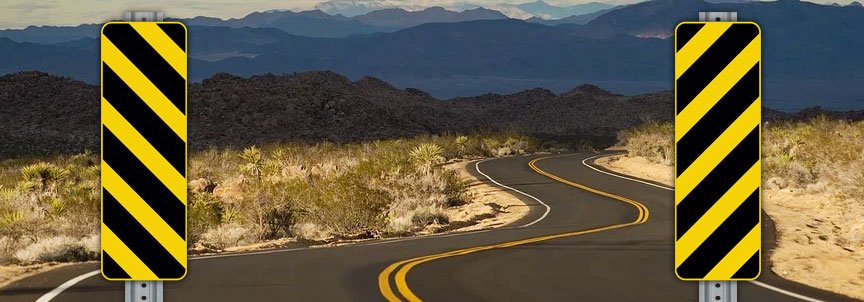
How Object Markers Are Used
The Manual on Uniform Traffic Control Devices (MUTCD) outlines three types of object markers that can be installed in areas with various road obstructions:
Type 1
The Type 1 object marker utilizes a system similar to the button copy signs we discussed earlier in which 3 ¼” Round Reflectors are connected to a piece of flat aluminum to increase visibility at night. The MUTCD indicates this type of object marker should be a diamond shape and consist of a yellow or black background.
Type 2
Similar to Type 1 Object Markers and the button copy signs discussed above, Type 2 markers also feature additional yellow 3 ¼” round reflectors arranged either vertically or horizontally on a flat aluminum panel. The MUTCD specifies the panel must consist of either a white or yellow reflectorized panel that measures at least 6” x 12” in size.
Type 3
The most widely used Object Marker is the Type 3 which features yellow and black alternating stripes to indicate which direction to pass around the obstruction. The stripes are sloping downward at an angle of 45 degrees toward the side of the obstruction on which traffic is to pass. This is very similar to the barricade sheeting in which a “RIGHT” object marker’s stripes slope down and to the left in order to direct traffic around the left of the obstruction.
End of Roadway Markers
While the End-of-Roadway markers are considered an Object Marker they have their own category in the MUTCD. This type of sign may also feature a button copy style with nine 3 ¼” Red Reflective buttons on a diamond shape aluminum panel. The panel shall have a red reflective or black non-reflective background. The most popular type of End-of-Roadway markers are a plain red retroreflective diamond panel that is typically 18” x 18” in size. The MUTCD acknowledges that some end-of-roadway applications may require more than one marker or a marker that is larger in size.
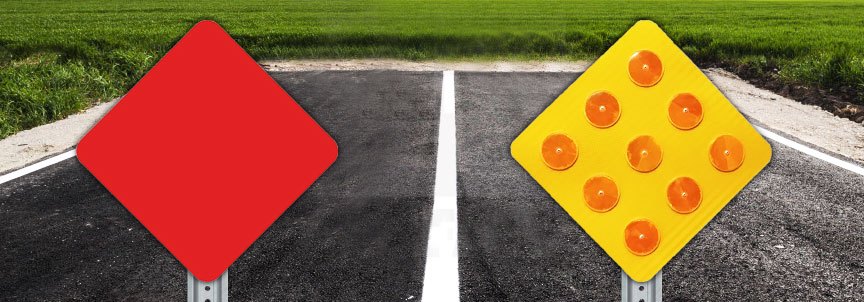
Installation of Object Markers
When marking an obstruction to the roadway such as a bridge, guardrail, railroad crossing, or other barrier it is crucial to place a reflectorized Object Marker to ensure the safe flow of traffic. As outlined in the MUTCD—Type 1, 2, and 3 Object Markers must be installed with at least 4ft of space from the bottom of the sign to the ground. The manual does offer some variance as it indicates there may be circumstances in which, by it’s nature, the obstruction may require the sign to be mounted higher or lower. End-of-Roadway markers have a similar standard with at least 4ft minimum space from the bottom of the diamond to the edge of the pavement.
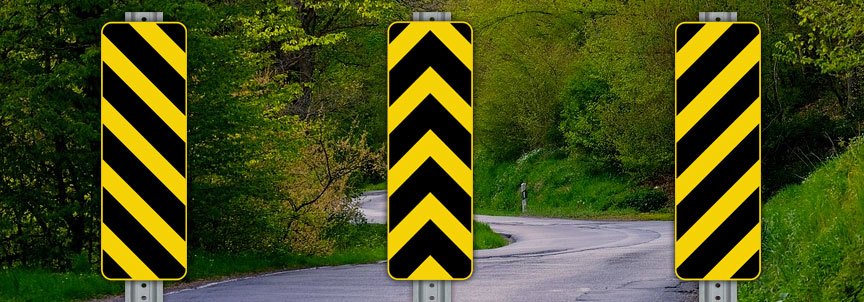
What to Look for When Purchasing Object Markers
The installation of Object Markers facilitates the safe flow of traffic through your city or county’s roadways and proves a critical tool for accident prevention. Playing such a vital role in vehicle safety it is important to find Object Markers that meet or exceed MUTCD specifications for reflectivity. In the sign industry today, there is a variety of online sellers offering cheap signs that are made from thin aluminum or plastic with non-reflective or sub-par reflective materials. When searching for traffic signs you must ask the following questions:
1.) What material is the sign made from? Aluminum or plastic?
While plastic signs may be acceptable in a few circumstances it’s imperative that all traffic signs are made from .080 gauge aluminum that will withstand harsh weather conditions.
2.) What material is used for the legend/design?
When searching for traffic signs always look for 3M High Intensity Prismatic or 3M Diamond
Grade sheeting. Many sellers offer Non-Reflective or Engineer Grade signs that do not meet
MUTCD specifications for use on public roadways.
3.) What is the lifespan of the sign?
The lifespan of the sign will depend on the answers to the questions above. When using industry
standard materials
like .080 aluminum and 3M High Intensity Prismatic reflective or higher your
sign will last 10+ years before replacement may be needed. In the long-term high quality
durable signage is more cost-effective as it requires less maintenance and replacement through the years.
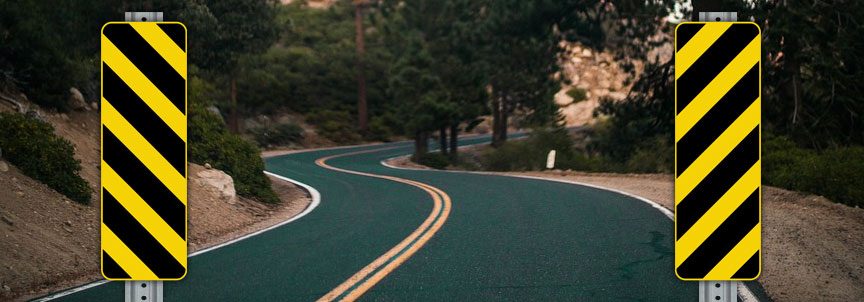
Where to Purchase Object Markers
Here at Dornbos Sign & Safety, Inc. we have been manufacturing traffic signs for over 60 years and we use the highest quality materials to produce your signage. All of our End-of-Roadway and Object Markers meet or exceed MUTCD specifications for reflectivity. We use materials MADE IN THE USA and take pride in the durability and longevity of our signs. With sturdy .080 aluminum and 3M High Intensity Prismatic reflective material your signs are sure to STAND OUT and STAND UP to the elements for years to come.
Customer satisfaction is our number one priority at Dornbos Sign & Safety, Inc. so we have worked hard to provide a line of End-of-Roadway and Object Makers that can be found here. We understand that every situation is unique so if you are unable to find what you’re looking for or have questions on product information and availability please don’t hesitate to give us a call or reach out through our website for more information. We are happy to help you find the signage that fits your specific needs.
Why wait? Reach out today and improve traffic safety on your roadways.
You can reach us here or at 1-800-922-0029.
